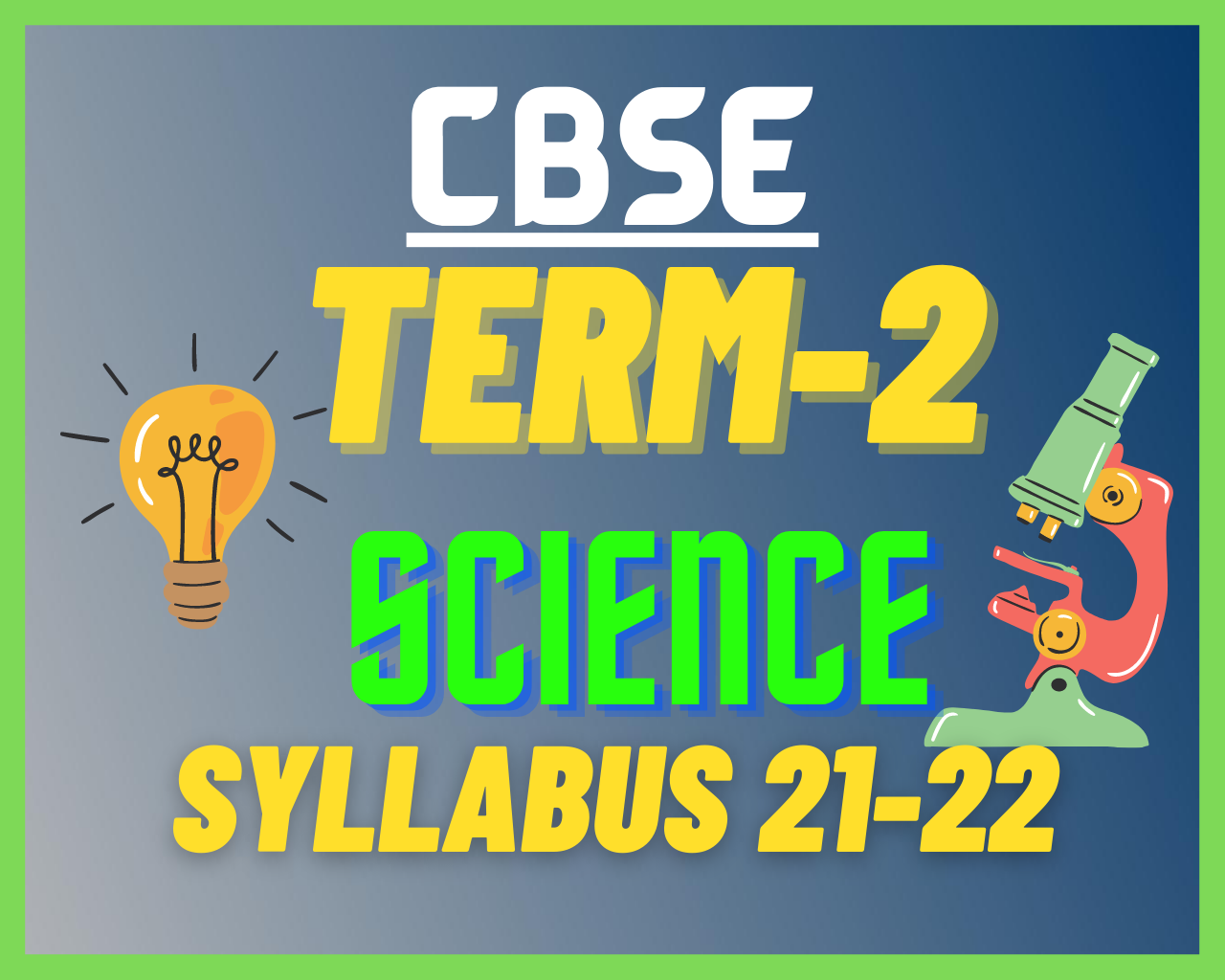SCIENCE
(SUBJECT CODE – 086)
SYLLABUS FOR PURPOSE OF EXAMINATION 2021-22
CLASS – X
The subject of Science plays an important role in developing well-defined abilities in cognitive, affective and psychomotor domains in children. It augments the spirit of enquiry, creativity, objectivity and aesthetic sensibility. Upper primary stage demands that a number of opportunities should be provided to the students to engage them with the processes of Science like observing, hypothesizing, experimenting recording observations, drawing, tabulation, plotting graphs, analyzing and driving conclusions etc., whereas the second stage also expects abstraction and quantitative reasoning to occupy a more central place in the teaching and learning of Science. Thus, the idea of atoms and molecules being the building blocks of matter makes its appearance, as does Newton’s law of gravitation. The present syllabus has been designed around seven broad themes viz. Food; Materials; The World of the Living; How Things Work; Moving Things, People and Ideas; Natural Phenomenon and Natural Resources. Special care has been taken to avoid the temptation of adding too many concepts that can be comfortably learnt in the given time frame. No attempt has been made to be comprehensive. At this stage, while science is still a common subject, the disciplines of Physics, Chemistry and Biology begin to emerge. The students should be exposed to experiences based on hands-on activities as well as modes of reasoning that are typical of the subject.
GENERAL INSTRUCTIONS:
- The total Theory Examinations (Term I+II) will be 80 marks and 20 marks weightage shall be for Internal Assessment (Term I+II).
- Internal Assessment – Maximum Marks 10 for each Term:
- There will be a Periodic Assessment that would include:
- Three periodic tests will be conducted by the school in the entire session. The average of the two periodic tests/marks of the best periodic Test conducted in the Term is to be taken into consideration.
- Diverse methods of assessment as per the need of the class dynamics and curriculum transaction. These may include – short tests, oral test, quiz, concept maps, projects, posters, presentations, enquiry based scientific investigations etc.
- . Subject Enrichment in the form of Practical/Laboratory work should be done throughout the year and the student should maintain a record of the same. Practical Assessment should be Page 2 of 10 continuous. All practicals listed in the syllabus must be completed.
- Portfolio to be prepared by the student- This would include classwork and other samples of student work.
COURSE STRUCTURE
CLASS X
| UNITS | TERM – II | MARKS |
| I | Chemical Substances-Nature and Behaviour: Chapter 4 and 5 | 10 |
| II | World of Living: Chapter 8 and 9 | 13 |
| IV | Effects of Current: Chapter 12 and 13 | 12 |
| V | Natural Resources: Chapter 15 | 05 |
| TOTAL | 40 |
TERM – II
THEME: MATERIALS
UNIT I: CHEMICAL SUBSTANCES – NATURE AND BEHAVIOUR
CHAPTER – 4 CARBON AND ITS COMPOUNDS
CARBON COMPOUNDS: Covalent bonding in carbon compounds. Versatile nature of carbon.Homologous series.
CHAPTER – 5 PERIODIC CLASSIFICATION OF ELEMENTS
PERIODIC CLASSIFICATION OF ELEMENTS: Need for classification, early attempts at classification of elements (Dobereiner’s Triads, Newland’s Law of Octaves, Mendeleev’s Periodic Table), Modern periodic table, gradation in properties, valency, atomic number, metallic and non-metallic properties.
THEME: THE WORLD OF THE LIVING
UNIT II: WORLD OF LIVING
CHAPTER – 8 HOW DO ORGANISMS REPRODUCE?
REPRODUCTION: Reproduction in animals and plants (asexual and sexual) reproductive health-need and methods of family planning. Safe sex vs HIV/AIDS.Childbearing and women’s health.
CHAPTER – 9 HEREDITY AND EVOLUTION
HEREDITY: Heredity; Mendel’s contribution- Laws for inheritance of traits: Sex determination: brief introduction; Page 8 of 10
THEME: NATURAL PHENOMENA
UNIT IV: EFFECTS OF CURRENT
CHAPTER – 12 ELECTRICITY
Ohm’s law; Resistance, Resistivity, Factors on which the resistance of a conductor depends. Series combination of resistors, parallel combination of resistors and its applications in daily life. Heating effect of electric current and its applications in daily life. Electric power, Interrelation between P, V, I and R.
CHAPTER – 13 MAGNETIC EFFECTS OF CURRENT
MAGNETIC EFFECTS OF CURRENT: Magnetic field, field lines, field due to a current-carrying conductor, field due to current carrying coil or solenoid; Force on the current-carrying conductor, Fleming’s Left-Hand Rule, Electric Motor, Electromagnetic induction. The induced potential difference, Induced current. Fleming’s Right-Hand Rule.
THEME: NATURAL RESOURCES
UNIT V: NATURAL RESOURCES
CHAPTER – 15 OUR ENVIRONMENT
OUR ENVIRONMENT: Eco-system, Environmental problems, Ozone depletion, waste production and their solutions. Biodegradable and non-biodegradable substances.
Hope you found it useful,
FOLLOW US ON:


